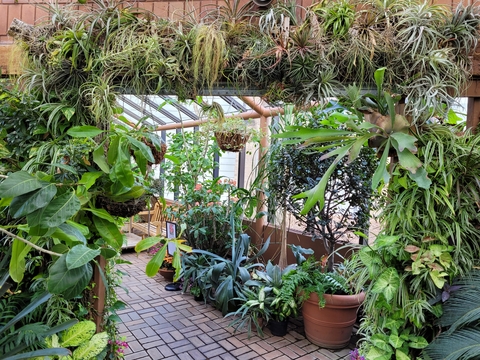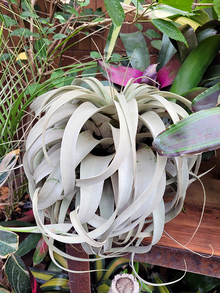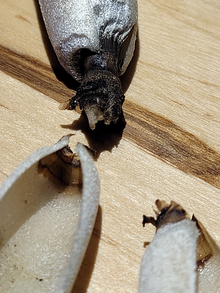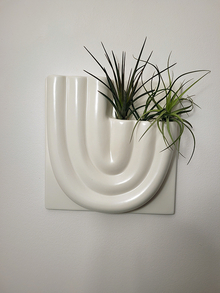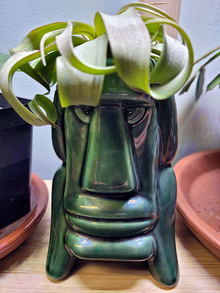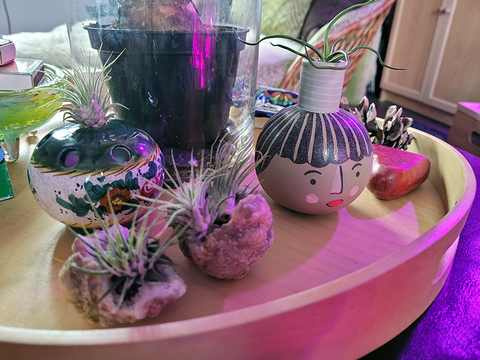I’m just a gardener like you and these days I am into air plants.
Among the many benefits of having an office at the Arboretum are the people I run into. Ricky Garza stopped by my office one day carrying an air plant (Tillandsia). Ricky manages the Meyer-Deats Conservatory, a wonderful world of tropical plants that soothes the plant nerd in me when the landscape is cold and snowy. Right now, hot off the 2022 Flower Show, the Conservatory is awash with colorful orchids, bright orange Clivia, Adenium and air plants.
What I remembered about air plants was one painted green and small enough to serve as a fern in my dollhouse. I had never seen one like the species Ricky held in his hands. Pretty cool. I started to think about how unique air plants are and how easy it is for people to grow them and use them as decor, whether you have limited space or lots of space.
Not long after Ricky’s show-and-tell, I visited a local garden center with my mom and I was once again struck by the cool factor of air plants. I bought one that day and, of course, went online to find out how to care for it. I came across Air Plant Supply Company. Thirty-six air plants later (minus 4 that I killed because I didn’t know better), I have become intrigued with Tillandsia. Good thing they don’t take up much real estate.
Give Tillandsia a try! Consider it one of your gardening experiments of 2022.
Tillandsia facts and tips
- Tillandsia are part of the Bromeliad (Bromeliaceae) family.
- Tillandsia are epiphytes, plants that grow on other plants but are not parasitic. They gather moisture and nutrients from rain, humidity, and the air.
- There are about 600 species of Tillandsia, and they are native to the West Indies, Mexico, Central and South America, and the southern U.S.
- Knowing the kind of houseplant you have and where it grows naturally will help you site it correctly in your house and provide proper care. Air plants range from mesic (green leaves and grown in humid conditions) to xeric. Xeric air plants have trichomes (hairs) that capture and hold moisture and reduce water loss. Xeric plants require less water and need bright light and good air circulation.
- Light: Give Tillandsia bright, indirect light. Place them near or hanging in a window or under a grow light.
- Hot sunlight will cause them to dry out.
- Keep them away from cold drafts in the winter, and provide a breezy environment in the summer such as hanging in an open window.
- Watering: If your Tillandsia leaves become soft and wrinkled, they need watering. Water your plants by dunking the plant in lukewarm rainwater, well water, creek or lake water — even melted snow — 2-3 times per week for about 30 minutes. Soak them in water for up to two hours about every 2-3 weeks.
- After watering, gently shake the plant to remove excess water and let them dry on their side or upside down before returning them to their vase/terrarium/display.
- I killed four plants by neglecting to do this and letting the water sit down inside the crown. The plants rotted quickly. (Read more about The water soaking method from Air Plant Supply Company.)
- Display: Showing off your air plants is half the reason people buy them. You can get pretty creative. I find myself evaluating containers specifically for their display possibilities for my Tillandsia and have posted some favorites here. Enjoy!
Kashima, Y. and Y. Matsuda, Living with Air Plants. Tuttle Publishing, Tokyo/Rutland, VT/Singapore. 2016.


